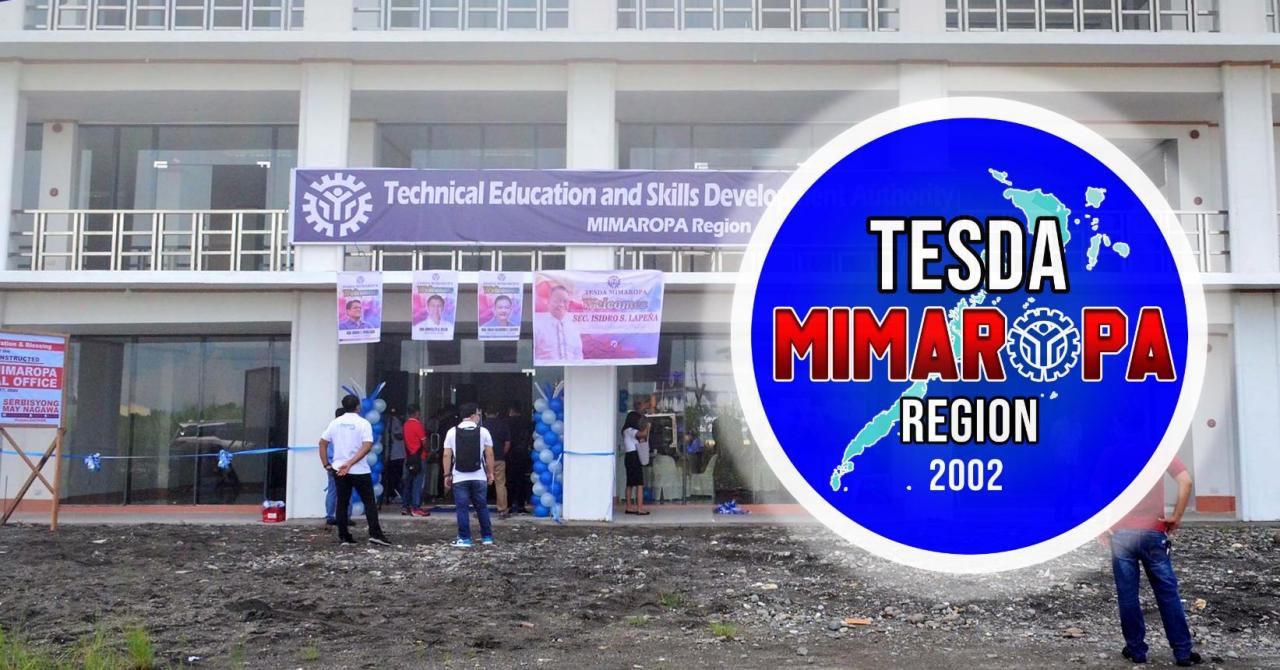The TESDA Region 5 office is one of the agency’s regional offices, which are located across the Philippines. The office can be found in Legazpi City, Albay, with their official Facebook page, “Technical Education and Skills Development Authority Region V Bicol.”
Through TESDA Region 5, Filipinos can sign up for technical and vocational training programs, language courses, scholarships, and other services. The offices serves people who are based the six provinces of Bicol Region: Albay, Camarines Norte, Camarines Sur, Catanduanes, Masbate, and Sorsogon.

Cities/Provinces Under TESDA Region 5
TESDA Region 5 covers the four provinces of Ilocos Region, namely: Ilocos Norte, Ilocos Sur, La Union, and Pangasinan. It also includes one independent city, Dagupan City, which is geographically located in Pangasinan province.
TESDA Region 5 covers the Bicol Region, which is comprised of Albay, Camarines Norte, Camarines Sur, Catanduanes, Masbate, and Sorsogon provinces, along with several cities: Legazpi City, Naga City, Masbate City, and Sorsogon City.
The regional center of Bicol is Legazpi City; this is also where the TESDA regional office is located. Furthermore, the agency operates provincial offices in these places: Legazpi City, Albay; Daet, Camarines Norte; Naga City, Camarines Sur; Calatagan Proper, Catanduanes; Masbate City, Masbate; and Sorsogon City, Sorsogon.
Programs and Services
The regional office provides Technical Vocational Education and Training (TVET) programs through four modalities: center-based, enterprise-based, community-based, and school-based.
Center Based Programs
These programs are held in TESDA’s regional and provincial traning centers. In Region 5, these centers are located in the following:
Regional Training Center
- Regional Training Center in Pili, Camarines Sur
Provincial Training Centers
- Provincial Training Center – Catanduandes
- Provincial Training Center – Guinobatan, Albay
- Provincial Training Center – Malilipot, Albay
- Provincial Training Center – Labo, Camarines Norte
- Provincial Training Center – Libmanan, Camarines Sur
- Provincial Training Center – Masbate
- Provincial Training Center – Sorsogon
Community Based Programs
Community-based programs are provided to the poor, marginalized, and vulnerable sectors. These include people who cannot afford or are unable to access formal training programs. In addition to training, these programs help establish livelihood enterprises that will be managed by the learners/trainees themselves. Notably, the programs also involve the participation of local government units (LGUs), non-government organizations (NGOs), and other partners.
Enterprise Based Programs
These programs are held in companies or firms; they come in three main types: Dual Training System, Apprenticeship Program, and Learnership Program.
As the name implies, the Dual Training System is conducted in two venues: the school/training center, and the company/firm. It focuses on providing technology-based training and education.
Meanwhile, the Apprenticeship Program is a training and employment program involving a contract between an employer and an apprentice. Usually, it covers a four to six-month training period.
As for the Learnership Program, this is an on-the-job training (OJT) type of program, covering a period of six months or less.
School Based Programs
These programs are carried out through TESDA-administered schools. They include post-secondary courses that don’t exceed three years. In Region 5, TESDA’s partner schools or institutions are the following:
- San Francisco Institute of Science and Technology (SFIST) in Malilipot, Albay;
- Camarines Sur Institute of Fisheries and Marine Sciences (CASIFMAS) in Pasacao, Camarines Sur;
- Ragay Polytechnic Skills Institute (RPSI) in Ragay, Camarines Sur;
- Cabugao School of Handicraft & Cottage Industries (CSHCI) in Bato, Catanduanes;
- Masbate Institute of Fisheries and Technology (MIFT) in Milagros, Masbate;
- Bulusan Vocational Technical School (BVTS) in Bulusan, Sorsogon; and
- Sorsogon National Agricultural School (SNAS) in Castilla, Sorsogon.
Language Skills Institutes
For Filipinos who are planning to work abroad, TESDA offers language and workplace communication courses through its Language Skills Institutes (LSIs). At present, these institutes courses on English, Japanese, Korean, Mandarin, and Spanish.
TESDA’s LSIs in Region 5 are as follows:
- TESDA LSI – Regional Training Center in Pili, Camarines Sur; and
- TESDA LSI – San Francisco Institute of Science and Technology (SFIST) in Malilipot, Albay.

List of TESDA Courses in Region 5
TESDA has an extensive list of courses in various fields: food and beverage services, entrepreneurship, electronics, construction, tourism, hospitality, computer technology, agriculture, and more.
In Region 5, the list of courses offered by TESDA include:
- Agroentrepreneurship NC II
- Barangay Health Services NC II
- Bookkeeping NC III
- Commercial Refrigeration Installation and Servicing NC III
- Community-Based Trainers’ Methodology Course
- Dressmaking NC II
- Driving NC II
- Electrical Installation and Maintenance NC II
- Electronic Products Assembly and Servicing NC II
- Organic Agriculture Production NC II
- Shielded Metal Arc Welding NC I
- Shielded Metal Arc Welding NC II
- Tile Setting NC II
- Trainers’ Methodology Level 1
Assessment and Certification
Upon completing a course, learners undergo evaluation done by competency assessors in TESDA’s accredited assessment centers. They are evaluated using the Philippine TVET Competency Assessment and Certification System (PTCACS). Passing the assessment is followed by certification, with the learners becoming part of TESDA’s Registry of Certified Workers. This is basically a pool of certified workers for various jobs in the Philippines.
How to Apply for Jobs in TESDA Region 5
If you happen to be interested in working for TESDA, you can browse their job vacancies online and follow these steps to apply:
- Go to the Careers page on the TESDA website.
- On the search box, type your preferred position, item number (if available), and/or office location (e.g. Region 5), then tap “search.”
- Your search’s results will be shown on screen. Click “details” on a particular result to know more about it.
- The screen will display the item number, position, office location, salary, job description, qualification, and required documents.
- To apply for the job, upload the necessary documents through the link given on the page.
- Wait for the TESDA office to contact you for further instructions regarding your job application.
Contact Information: TESDA Region 5
For queries or concerns about TESDA Region 5, its programs, and services — you can get in touch with them through these details:
Address: Regional Center, TESDA Regional Office V, Rawis, Legazpi City, 4500 Albay
Telephone: (052) 482 1250
Email: region5@tesda.gov.ph
Website: https://www.tesda.gov.ph/
Facebook: https://www.facebook.com/TESDARO5/
Google Map Location:
Provincial Offices Under TESDA Region 5
Similar to other regional offices, TESDA Region 5 works hand-in-hand with several provincial offices. Here is a list of TESDA’s provincial offices in the Bicol Region:
TESDA Provincial Office – Albay
Address: TESDA V Regional Office Compound, Regional Center Site, Rawis, Legaspi City
Telephone: Smart 0919-078-4280 / Globe 0917-828-9539 / Globe Landline (052)-201-8531
Email: region5.albay@tesda.gov.ph
Google Map Location:
TESDA Provincial Office – Camarines Norte
Address: LGU-Daet Compound, Brgy. Pamorang on Daet, Camarines Norte
Email: region5.camarinesnorte@tesda.gov.ph
Google Map Location:
TESDA Provincial Office – Camarines Sur
Address: 2nd Floor DOLE Bldg., Naga City Hall, Naga City
Telephone: (054) 473-1085
Email: region5.camarinessur@tesda.gov.ph
Google Map Location:
TESDA Provincial Office – Catanduanes
Address: CSU Compound, Moonwalk, Calatagan Proper, Catanduanes
Telephone: (0928) 331-5545
Email: region5.catanduanes@tesda.gov.ph
Google Map Location:
TESDA Provincial Office – Masbate
Address: PEO Compound, Capitol Road, Masbate City
Telephone: (056) 588-2423 / (056) 333-5410
Email: region5.masbate@tesda.gov.ph
Google Map Location:
TESDA Provincial Office – Sorsogon
Address: City Hall Compound, Cabin-an, Sorsogon City
Telephone: (056) 256-0961 / (056) 256-1964
Email: region5.sorsogon@tesda.gov.ph
Google Map Location:


